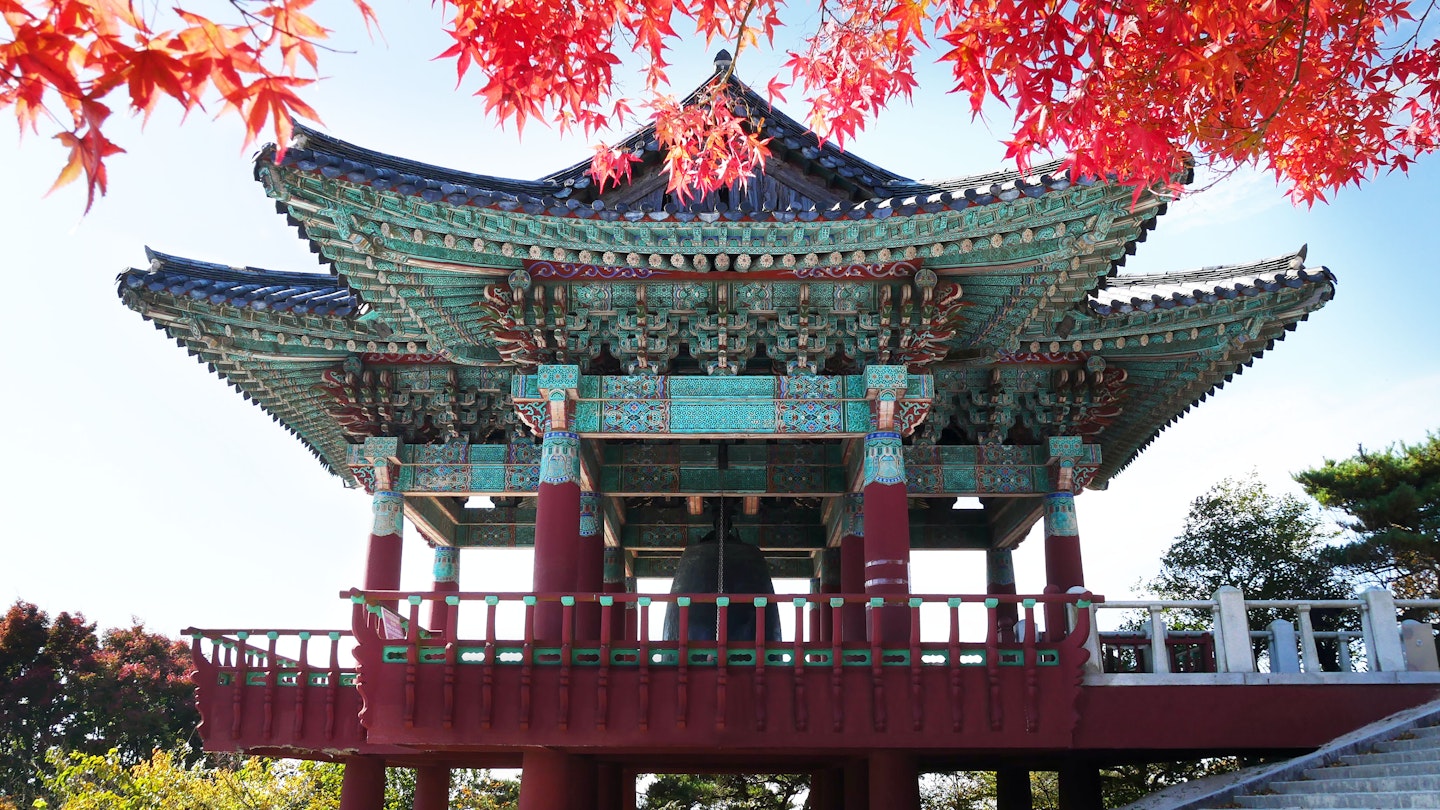Explore Gyeongju City: A Cultural and Historical Gem
Gyeongju City offers a unique glimpse into the long history of the Korean peninsula. History and art enthusiasts will find a plethora of activities; the religious and political architecture and relics are notably famous. Family visitors will find it an excellent way to introduce living history to their children, sharing memorable experiences with their families.
The Top Reason to Visit: Gyeongju’s Remarkable Preservation of Korean History
Gyeongju is located in the southeast of Korea, off the typical tourist path in South Korea, which tends to be focused in the northwest, around the capital Seoul. While there is plenty to see in Seoul, much of it is modern. However, Gyeongju stands out with its long, premodern national history that is intricately linked with Confucianism and Buddhism, making it a hidden treasure worth exploring.
Despite South Korea’s rapid development leading to the loss of much pre-industrial architecture, Gyeongju has preserved its archaic charm. This effort is mandated by the government, requiring modern constructions to adopt traditional architectural styles, such as the sloping wooden roofs found on older buildings. This unique blend of old and new keeps the city’s historical ambiance alive, allowing visitors to experience a portion of Korea’s rich heritage.

The Finest Piece of Art in Korea: The Seokguram Grotto
Gyeongju boasts multiple UNESCO World Heritage sites within its boundaries, with the Seokguram Grotto being one of its most celebrated. This grotto features a stunning stone Buddha from the eighth century, positioned in a shallow, beautifully crafted cave, with various figures adding to its majesty. It is arguably the finest piece of Buddhist sculpture I have witnessed in my years of travel across Asia. This deep cultural immersion offers a perfect opportunity for families to engage with the basics of Buddhism while experiencing art that transcends time.
However, reaching the Seokguram Grotto requires some effort, as the journey involves a long, winding drive, followed by a 20-minute hike. Unfortunately, the traffic of tourists has necessitated the installation of a glass shield to protect the site from wear and tear. Therefore, visiting sooner rather than later is advisable, as ongoing tourism pressures may further limit access.

A Highlight of Religious Art in East Asia: Seokguram Buddha
Another prominent site in the area is Bulguk-sa Temple. This expansive UNESCO site captures the essence of Korea’s long-standing Buddhist heritage with its myriad statues and artifacts, dating back to the eighth century. For visitors interested in religious art, these sites are among the high points of travel in East Asia.
Moreover, visitors can participate in a unique “temple stay” experience at Bulguk Temple, immersing themselves in the daily lives of resident Buddhist monks, engaging in activities such as dining, chanting, and meditation. This truly offers a distinctive insight into the spiritual culture and is a highly recommended experience for travelers in Korea.

A City with a Legacy That Dates Back to the Second Century
For history enthusiasts, Gyeongju also presents significant political history. It was the capital of the ancient kingdom of Silla, which lasted nearly a millennium and contributed immensely to the unification of the Korean people. The remnants of this rich history can be found in the city’s famous tombs and palaces, which are key attractions beyond the Buddhist sites.
Notably, Cheomseongdae, Asia’s oldest astronomical observatory, stands as a testament to the advanced intellect of the Silla period. Its silhouette has become an unofficial city symbol, appearing on various merchandise. Additionally, the Donggung Palace complex, set against an artificial pond, is particularly striking when illuminated at night; it dates back to the seventh century and remains a significant cultural landmark.

The royal tombs, low-key yet significant landmarks scattered throughout the city, are reminiscent of the Pyramids of Giza. These burial mounds served as final resting places for Silla kings and were constructed to ensure the treasures within remained protected from theft. Several of these sites are open to the public, displaying artifacts that reflect the lifestyle and culture of Korea’s aristocracy over a millennium ago.
The Comforts of Sleeping in a Hanok, a Traditional Korean Accommodation
For families seeking a deeper connection with Gyeongju’s history, the city offers accommodations in traditional Korean residences known as hanok. Constructed with natural materials, these traditional homes feature a unique under-the-floor heating system called ondol, providing a comfortable sleeping experience similar to that traditionally enjoyed by Koreans.
Moreover, Gyeongju’s local cuisine reflects its diverse cultural landscape. Visitors can indulge in unique Gyeongju beef and fish dishes, alongside snacks inspired by the Cheomseongdae observatory.
Gyeongju City’s Living History
This overview merely scratches the surface of what Gyeongju has to offer in terms of historical depth and cultural experiences. Travelers interested in history, art, religion, and architecture are likely to find Gyeongju even more enriching than other major South Korean cities. This living history serves as a profound way to educate younger generations about the past, transforming history from books into enriching experiences. Our children found themselves asking countless questions about Korean history.
While South Korea’s larger cities draw the most tourists, they often feel interchangeable with other modern urban centers. In contrast, Gyeongju embodies a deeper, older Korea, filled with its finest traditions of art, spirituality, and governance, offering a far more authentic experience. Therefore, travelers should not overlook this gem on their journey through South Korea.





